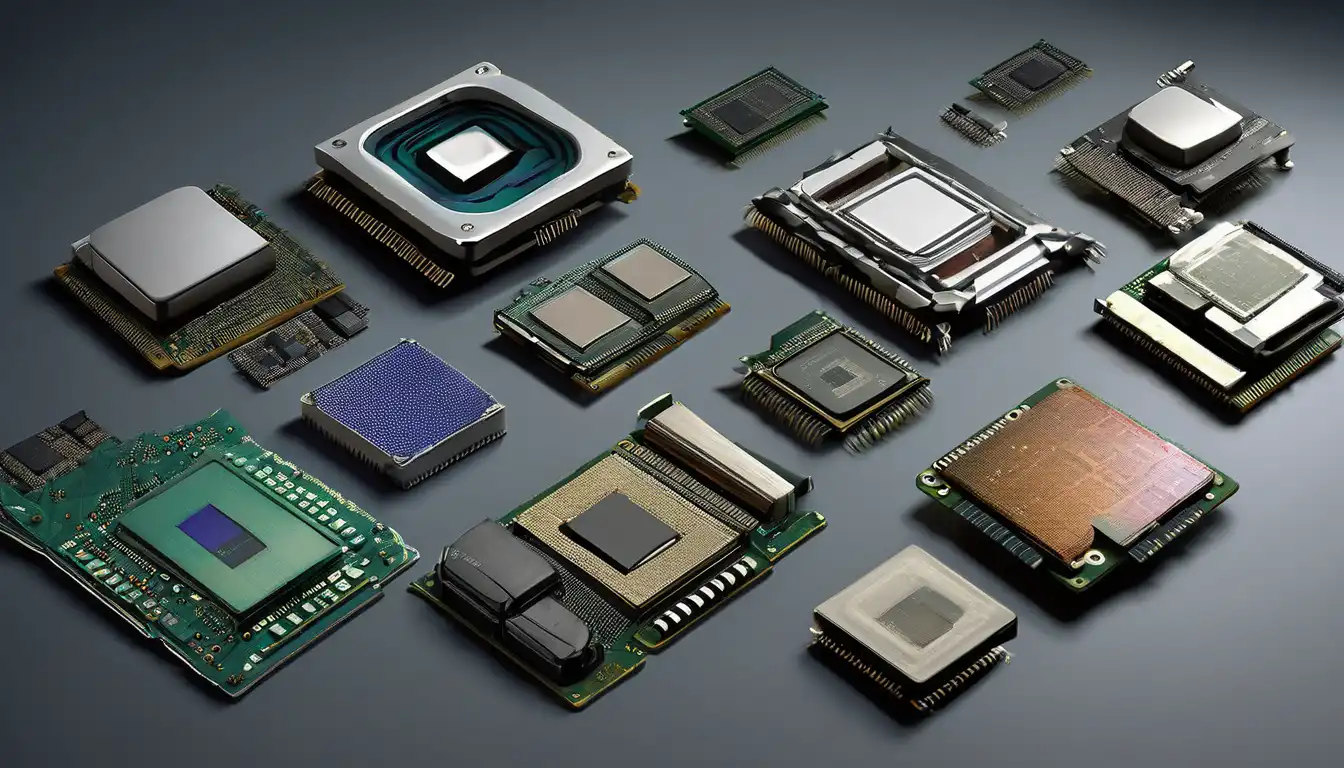The Dawn of Computing: Early Processor Beginnings
The evolution of computer processors represents one of the most remarkable technological journeys in human history. From room-sized machines with processing power less than today's simplest calculators to the multi-core processors that power our modern world, processor development has followed an exponential growth curve that continues to accelerate.
In the 1940s, the first electronic computers used vacuum tubes as their primary processing components. These massive machines, such as ENIAC, contained approximately 17,000 vacuum tubes and occupied entire rooms. Despite their size, they could perform only basic calculations at speeds that seem unimaginably slow by today's standards. The transition from mechanical to electronic computing marked the true beginning of processor evolution.
The Transistor Revolution
The invention of the transistor in 1947 at Bell Labs fundamentally changed processor design. Transistors were smaller, more reliable, and consumed significantly less power than vacuum tubes. This breakthrough paved the way for the development of integrated circuits, where multiple transistors could be fabricated on a single semiconductor chip.
By the late 1950s, engineers began experimenting with integrated circuits, leading to the creation of the first commercially available microprocessor. The transition from discrete transistors to integrated circuits represented a quantum leap in processing capability and efficiency.
The Microprocessor Era Begins
The 1970s witnessed the birth of the modern microprocessor with Intel's introduction of the 4004 processor in 1971. This 4-bit processor contained 2,300 transistors and operated at 740 kHz – modest specifications by today's standards, but revolutionary at the time. The 4004 demonstrated that complex processing could be accomplished on a single chip.
Following the 4004, Intel released the 8008 in 1972 and the groundbreaking 8080 in 1974. These processors laid the foundation for personal computing and established architecture principles that would influence processor design for decades. The 8080 in particular became the heart of early personal computers like the Altair 8800.
The x86 Architecture Emerges
Intel's 8086 processor, introduced in 1978, established the x86 architecture that remains relevant today. This 16-bit processor could address up to 1MB of memory and introduced features that would become standard in future processors. The x86 architecture's backward compatibility became a key factor in its enduring success.
Throughout the 1980s, processor evolution accelerated with the introduction of the 80286, 80386, and 80486 processors. Each generation brought significant improvements in clock speed, transistor count, and architectural sophistication. The 386 introduced 32-bit processing, while the 486 integrated the math coprocessor directly onto the chip.
The Clock Speed Race and Moore's Law
The 1990s witnessed an intense competition for higher clock speeds, often referred to as the "megahertz wars." Intel's Pentium processor, introduced in 1993, marked a departure from the numeric naming convention and featured significant architectural improvements. Clock speeds climbed from 60 MHz to over 1 GHz by the end of the decade.
During this period, Moore's Law – the observation that transistor counts double approximately every two years – became the guiding principle of processor development. This exponential growth enabled increasingly complex processors with more features and higher performance. The industry consistently met or exceeded Moore's predictions for decades.
The Multi-Core Revolution
By the early 2000s, physical limitations began challenging the clock speed race. Heat generation and power consumption issues led manufacturers to shift focus from increasing clock speeds to adding multiple processing cores. This marked a fundamental change in processor design philosophy.
Intel and AMD introduced dual-core processors around 2005, followed by quad-core designs. Today, consumer processors commonly feature 8-16 cores, while server processors may contain 64 cores or more. This parallel processing approach required software developers to adapt their programming techniques to leverage multiple cores effectively.
Modern Processor Innovations
Contemporary processor evolution focuses on several key areas beyond core count increases. Energy efficiency has become paramount with the rise of mobile computing. Manufacturers now prioritize performance-per-watt metrics, leading to sophisticated power management features and specialized low-power cores.
Specialized processing units have emerged to handle specific workloads efficiently. Graphics Processing Units (GPUs) have evolved from simple display controllers to powerful parallel processors capable of handling complex computational tasks. AI accelerators and tensor processing units represent the latest specialization trend.
Architectural Refinements and Manufacturing Advances
Processor manufacturers continue to refine fundamental architectures while pushing manufacturing technology boundaries. The transition to smaller process nodes – from 90nm to today's 3nm and smaller – enables more transistors per chip and improved efficiency. However, these advances face increasing physical and economic challenges.
Modern processors incorporate sophisticated features like predictive branching, out-of-order execution, and advanced caching strategies. These architectural improvements often deliver more performance gains than simple clock speed increases. The ongoing optimization of existing architectures demonstrates the maturity of processor design.
The Future of Processor Evolution
Looking forward, processor evolution faces both challenges and opportunities. Quantum computing represents a potential paradigm shift, though practical quantum processors remain in early development stages. Neuromorphic computing, inspired by biological neural networks, offers alternative approaches to information processing.
Heterogeneous computing architectures that combine different types of processing units on single chips will likely dominate future development. Specialized accelerators for AI, cryptography, and other specific tasks will become increasingly integrated with general-purpose cores. This approach maximizes efficiency for diverse workloads.
Sustainability and New Materials
Future processor evolution must address sustainability concerns. Energy consumption and material usage will drive innovation toward more efficient designs. Researchers are exploring alternative materials like graphene and carbon nanotubes that could eventually replace silicon.
The industry also faces economic challenges as manufacturing costs continue rising with each process node shrink. These factors may lead to more focused innovation rather than blanket performance improvements across all processor segments.
The evolution of computer processors demonstrates remarkable technological progress over decades. From simple vacuum tube circuits to complex multi-core systems containing billions of transistors, processors have transformed how we live, work, and communicate. This journey continues as new challenges inspire creative solutions and push the boundaries of what's possible in computing technology.
